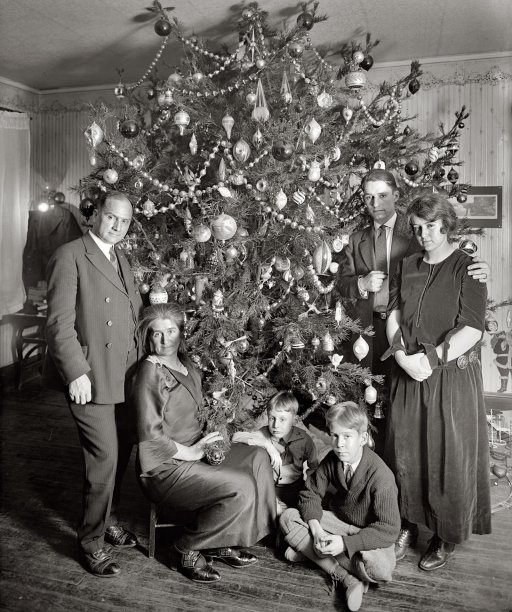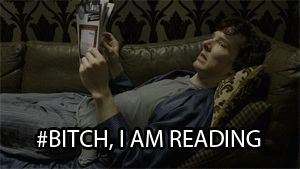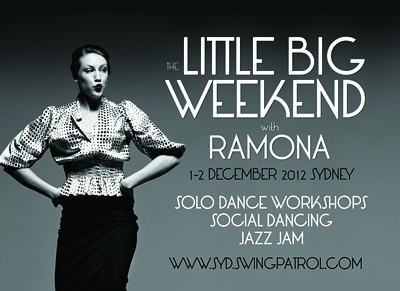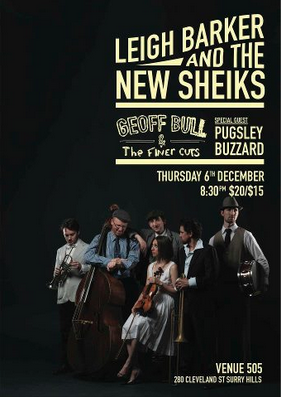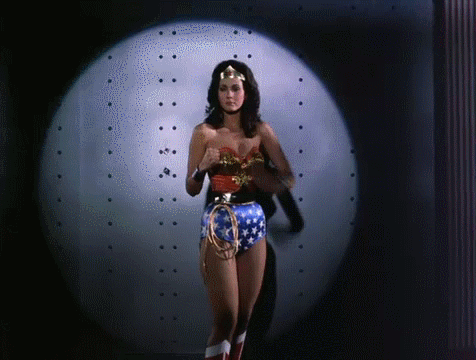One of the most useful concepts I’ve been working on this year in dancing is the idea of layers or different types of connection.
It’s something I’ve been working on for, oh, I don’t know MY ENTIRE DANCING CAREER, but this year it’s been extra fascinating.
Basically, you assume that connection has to have varying degrees of intensity. So you might have – at your extreme – zero connection, where you’re not even touching. But then you the opposite end of the spectrum is where you have a really heavy, strong, intense connection. The rubber band is a brilliant little metaphor or thinking tool for this. Connection is a flexible, stretchy concept, just like a rubber band, just like a healthy body.
So you don’t just have ‘a connection’, you have connection with a partner which is constantly shifting and changing. And that’s different with every partner.
Now, I think that if you’ve been dancing for even a few years or are halfway observant, you’ll notice that all your partners feel different. I think follows notice it more than leads if the leads have been learning in a scene where the alpha leads emphasise a simple, un-nuanced approach to leading: follow do what lead tells you to!
Follows figure out that each lead feels different, and communicates their leads in a different way. Any halfway insightful lead notices that each follow feels different. Though you’d be surprised how common it is for leads to have learnt to dance thinking that the lines of communication only travel in one direction.
At any rate, this whole idea is fascinating, because it presupposes a flexible, mutable, changing ‘frame’.
I hate the term ‘frame’ because it implies – to nondancers – a fixed or concrete way of holding your body and connecting that body to your partner. The accompanying mental image is of a picture frame, or the frame of a chair or bed or piece of furniture or a house. That’s the silliest thing ever. We all know, if we’ve ever spent a day at the computer, that holding one position for a long time is BAD NEWS for your body.
To dancers beginning to learn about connection, this concept of ‘frame’ shapes their understanding of ‘connection’ – it also assumes that connection happens in one way, that there’s a ‘right’ and ‘wrong’ and that variations aren’t possible.
So I don’t like the term ‘frame’ and I don’t use it.
I think that using varying intensities of connection is important not only for good leading, but also for encouraging follows to listen to their lead. A lead who only uses the ‘strong’ setting is shouting at their follow, and when people shout at us, we either stop listening, or we shout back. What’s good about that? Nothing.
I’m fairly certain it drives our students absolutely nuts, but we don’t have hard and fast rules for a lot of things in our classes.
When they ask us “How do we change the hand hold after a turn?” we say things like ‘just keep your hands relaxed and flexible (‘soft hands’), and it will naturally turn out ok. If you end up with a weirdo hand hold, just change it.’ That last part always kind of blows their minds. It really is that simple – if it’s weirdo, change it.
I know they’d prefer a clear set of rules for hand holding. But our only real rule is ‘don’t hurt yourself or your partner, respect each other, and chill out, yo.’ That last part is about doing more with less. Relax your hands, because tight, scrunched up hands hurt. And are, incidentally, harder to dance with. If we are being specific, we also like to use the idea that holding hands with your partner should be like walking down the street holding hands with someone you care about. If you’re leading, you might imagine yourself walking with your nanna, who’s still her own person, but might need some direction. Either way, you don’t squeeze, you don’t manhandle them around, you don’t yank. You keep a nice relaxed, but firm hand hold. And you stop to look at interesting things.
We also get questions about our arms. The other night a student asked “But what about spaghetti arms?” and I wanted to say “THROW THAT WORD AWAY!” because it’s not helpful because it suggests that totally relaxed arms are a badnaughtywrong, and it doesn’t account for the way our bodies respond to taking a step away from our partner when we both have totally relaxed arms.
But instead I had to find a way to say ‘that idea of an absolute value for connection isn’t useful. We don’t look for a single muscle ‘tone’ or degree of hardness or softness in the arm. We look for varying muscle recruitment and use – we use what we need for the circumstances and no more.’ But that’s not a helpful response to a student who’s trying really hard to figure out how they and their partners should feel. I can’t remember what I said. I’m fairly sure I said too much, which is my main failing as a teacher. Just. Stop. Talking. It was something I grappled with in tutoring as well.
I’ve also had a student ask “Are you going to tell the follows to make sure their elbows are in front of their hips?” when we were teaching sugar pushes. And I replied ‘we don’t need to make that rule. Lets see what happens if we let our elbows go back behind our bodies’ and we did, and most of the students realised (hopefully), that what happens when you just let your elbows go back behind your body, is that you just end up bumping torsos. Which is hardly a bad thing.
Hopefully they also learnt that so long as we’re not hurting ourselves, it’s ok to experiment with this stuff. I know that that student wanted me to tell him that there’s a rule for arms in sugar pushes, because that’s how he’d been taught. And the follows not following that rule was making it difficult for him to ‘lead’. But I know that sugar pushes come in all shapes and sizes and intensities and durations, so it’s not really helpful to have a ‘rule’ about our elbows that might limit these possibilities. I also know that asking about ‘elbows’ and wanting a ‘locked’ joint (which is a consequence of that sort of rule) is evidence that a dancer doesn’t understand how compression works. It also suggests that that student likes the ‘on/off’ extreme intensities approach to connection.
I know that a lot of leads find follows who employ more graduated and subtle scales for connection frustration. They ‘feel floppy’. And I know that a lot of teachers warn students (especially follows) about straightening their arms to full extension. My feeling here, is that full extension is totally 100% ok. The problem comes when that full extension is followed by a collapsing of the shoulder, or a locking of the shoulder, as the follow tries to protect themselves. Or just as worryingly, a hyperflexing of the elbow because the muscles in the arm aren’t turning on properly to do the work, and the elbow joint ends up overloaded.
The problem is that the follow’s muscles in the shoulder and torso aren’t turning on properly. And that means that their armies and shoulders aren’t connecting up to their centres (to all the other muscles and things in their lower torsos).
…what I’m trying to say, is that the fully extended arm isn’t a problem in itself. It’s the relationship between muscles and bones and things, in specific circumstances that can be problematic. But we can’t make hard and fast rules for all these circumstances. We can only work for efficient, strong muscles that turn on when they’re needed and aren’t recruited when they’re not.
This is something that I struggle with. It wasn’t until I had a shoulder injury (bursitis + rotator cuff asplosion last year) and had to do physio exercises that I realised I’d never actually followed properly before. In 12 years. No proper following. Once I learnt how to turn on and off these muscles, I suddenly felt a million times more responsive as a follow, and I actually felt my centre connect up with my arm. This is a problem I’ve had in my right shoulder, but not my left, which is partly because of those dodgy bits that led to an injury, but also because of lifestyle (I’m right handed and use a mouse right handed). It also explains why I’ve found leading a lot easier to get on top of, and to understand. Needless to say, I was so frustrated with myself for not figuring out how my body worked earlier, and yet also massively determined to learn more. There was also a fair bit of delight: I was amazed and delighted by this insight.
At the end of the day, all this talk about arms is really evidence of a profound misunderstanding of how connection – leading and following – work. The arms aren’t the message. They are one part in a communications system. The important action is in your torso. Your core. Your glutes, abs, pelvis, lower back… all that lovely stuff. I’m a strong believer in using bounce to turn on the core, and turn off the arms. If you aren’t bouncing, you are far, far more likely to be over-recruiting your arms, shoulders… all the parts of you that shouldn’t be working that hard. I’m also something of an evangelist when it comes to footwork and clear weight changes. Bouncing is a key part of clear weight changes (and if not bounce, then the more west coast swing type pulse – the turning on and off, collecting and relaxing of the core) is super massively important. It’s important for making your body work efficiently, but it’s also important for sending clear signals to your partner.
I don’t like to distinguish between ‘arm leads’ and ‘body leads’, because I don’t think it’s that simple. How the fuck do you communicate a body lead through just a held hand, if you don’t use your arms? It’s at once far more complicated, and far simpler than dividing leads into ‘body’ and ‘arm’ leads. Our bodies are a system, and we need to think about them that way. Not as chopped up, separate sections.
All of this thinking about physiology and biomechanics really goes hand in hand with an ‘experiment with movement’ and ‘don’t make hard rules’ approach to learning dance. We all have different bodies and different physical abilities, so we need to explore our own abilities. And as we get fitter or less fit, these abilities change. If someone gives us a hard and fast ‘rule’ about our elbows or whatevs, then we stop our learning before we get to our own limits. We don’t get to experience everything that we are capable of. The parallels with thinking, ideology and ideas in learning are obvious.
Finally, the opportunities for injury in lindy hop are many and varied. And there are some important ‘rules’ that I stick to.
1. Respect yourself, respect your partner. That means listen to your partner, listen to your body and your own feelings, and tell your partner how you feel. It also means don’t do silly things like yank on someone’s arm like it’s a lawn mower starter. It also means watch, pay attention, and listen.
2. Relaxed muscles are as important as active muscles. But knowing which muscles need to be on, and which need to be off is a matter of trial and error, and then training and learning. Understanding how a body works is very important, and being aware of what your own body is doing – when you’re a teacher – is essential. This is where physios rock, and 90% of lindy hop teachers suck.
3. Experiment. What feels bad? What feels good? How far can you reach? How far can you bend?
Teachers should encourage students to ask questions, and teachers should avoid using ultimatums or finite answers. Why do you do things that way? What happens if you do something new? What is possible? Most importantly, what brings you joy? Which movements feel just THE BEST?
4. Warm up and warm down. Don’t leap into dancing cold and, and don’t put your tools away dirty. Stretch regularly and learn to listen to your body’s limitations, and to be wary of adrenaline masking pain. Doing some strength training and proper stretching training is absolutely essential.
All dance classes should incorporate warm ups and encourage students to take up maintenance type exercise to prevent injury.
I wish I was better at this stuff. I wish I’d started doing pilates or yoga when I was a teenager. I feel as though I’m forever rushing to catch up, and that there’s something amazing to be learnt about my body just around the corner. This is why I try to be as open to new ideas about dance as possible. Even when it’s new and a bit threatening to my preconceptions. Learn more things. Become bigger.


